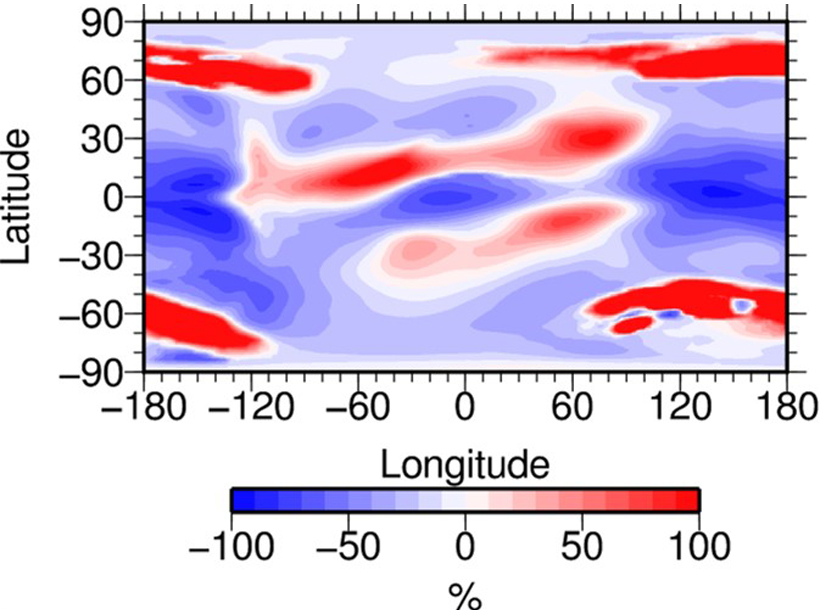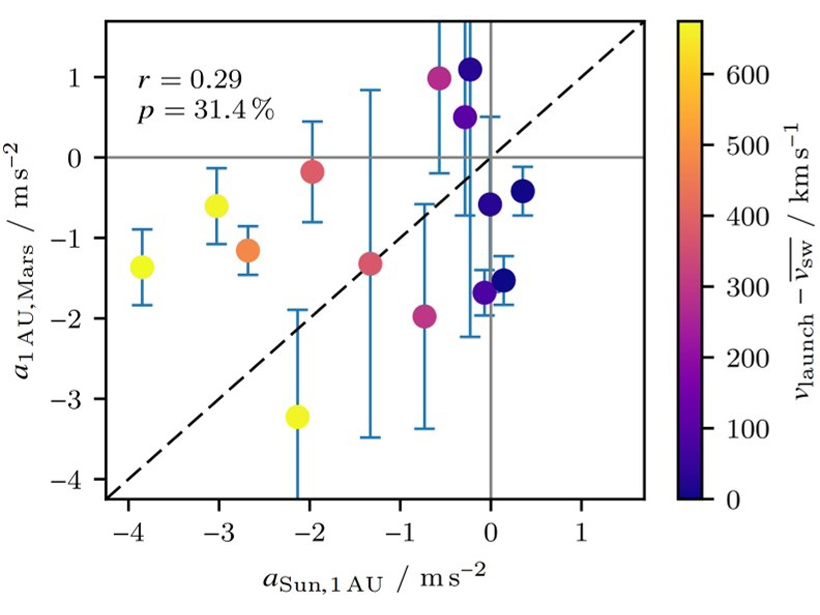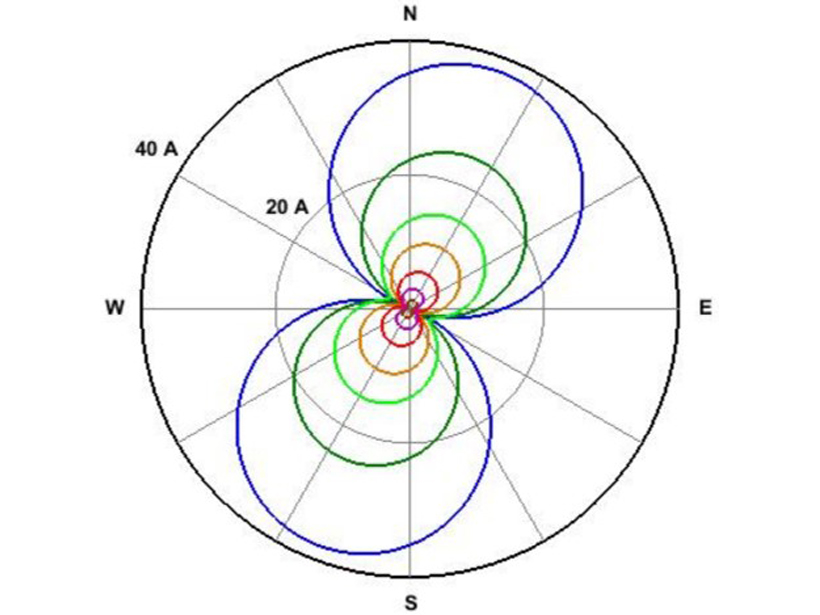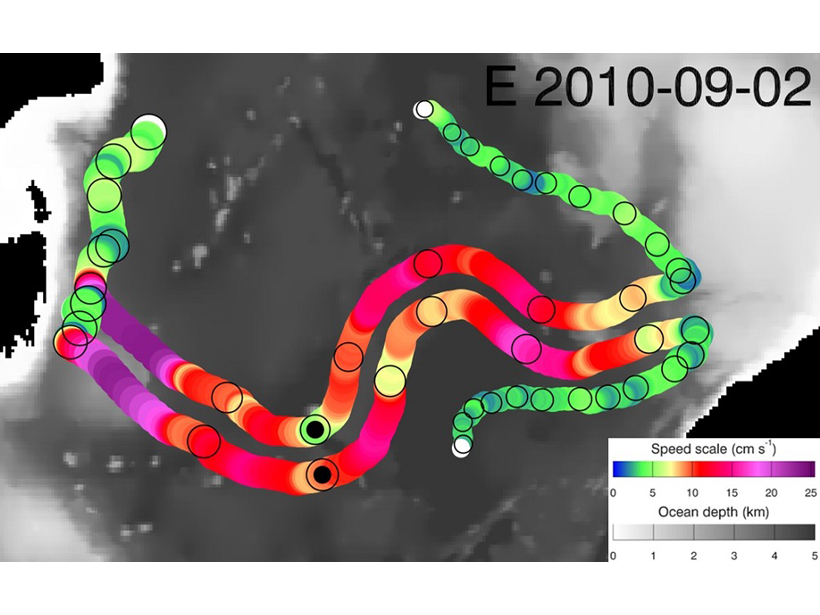A stochastic sediment routing model for river networks is inverted to determine sediment source areas based on point observations of grain size and sediment flux at the basin outlet.
Editors’ Highlights
Modeling Geospace: Quantifying the Known-Unknowns
Imperfect knowledge of high-latitude forcing of the coupled ionosphere-theremosphere system translates into uncertainty in the low-latitude and midlatitude response to a geomagnetic storm.
Long Term Preservation of Subsurface Ice on Mars
Layered-ejecta craters on Mars that are associated with impacts into rock mixed with volatiles have been formed throughout the planet’s history indicating the long-term preservation of subsurface ice.
Fast CMEs Continue to Decelerate in the Outer Heliosphere
Most fast coronal mass ejections will be decelerated into ambient solar wind quickly in the inner heliosphere, but some of them continue the deceleration with an even larger amplitude beyond 1 AU.
Ocean Wind Satellites Observe an Amazonian Drought
Satellites designed to observe ocean winds can also be used to map both forest structure and water content, allowing researchers to disentangle factors of carbon loss due to drought in the Amazon.
Exploring How Space Weather Can Damage Power Grids
A new model of geomagnetically induced currents revisits how space weather damaged a New Zealand grid transformer in 2001, and shows how much worse it could be in a space weather superstorm.
What Will Redwood Trees Do Without Foggy Days?
Coastal California fog—a key source of water for the iconic redwood tree—has declined by a third. Can a trace gas, carbonyl sulfide, be used to assess the effect on plant productivity?
Two Paired Eddies Travel Faster and Further Than One
The first observational evidence of dipole eddy pairs (modons) in the southern midlatitude ocean reveals that they move faster, live longer, and travel greater distances compared to single eddies.
Space Weather: Exploiting Meteorology’s Toolkit
Space weather forecasting is benefiting, and can benefit much further, from concepts and tools already developed by the global meteorological community.
Plotting the Pliocene Polar Front
Understanding changing conditions in the south polar oceans during the warm late Pliocene period may help predict the impact of contemporary warming.










